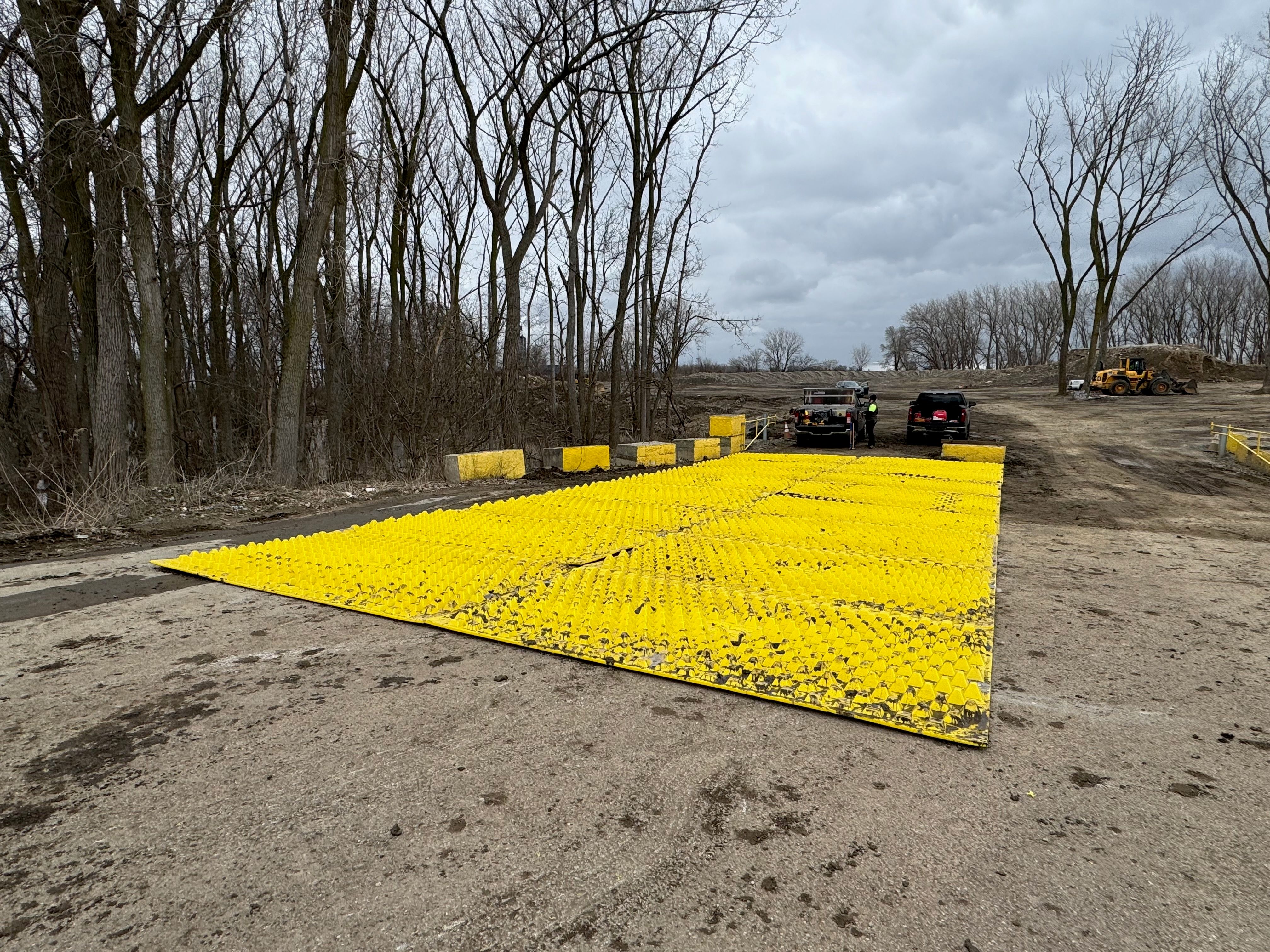Missouri Temporary Construction Exit BMPs
The Department of Natural Resources (DNR) administers the Clean Water Act (CWA) in the state of Missouri. Land Disturbance Permits are issued under the NPDES stormwater program and are issued by the Missouri DNR to contractors, industrial sites, and MS4s. These permits are required for all land-disturbing construction activities that disturb one or more acres over the life of the project. The Missouri ePermitting Information page can be used to requrest a new land disturbance permit (MORA00000) and will later also be used for other types of permits.
Missouri MORA00000 Land Distrubance Permits
To obtain a Land Disturbance Permit, MORA00000, contractors will create a Stormwater Pollution Prevention Plan (SWPPP) which identifies the person responsible for managing the pollution control measures that will be taken on the job. The SWPPP also contains a site map which details Best Management Practices (BMPs) that will be used to mitigate stormwater pollution. Chapter 6 Section 1 of the DNR Field Guide lists site preparation BMPs including contruction entrance stabilization techniques.
The stated purpose of stabilized entranes is “to provide an exit area where construction vehicles can drop the mud and caked soil from their tires to avoid transporting it onto public roads.” Contaminated sediment that is dropped on hard surfaces, such as roadways or parking lots, will wash into stormdrains causing pollution. Techniques in the handbook include temporary rock Construction exit pad, Wheel Wash, rumble plate, and bamboo mats. The guide advises about common problems and solutions for each BMP. Every technique must restrict traffic to stabilized entrances to avoid vehicles from bypassing the control measures and leaving the site with contaminated soil.
Site Preparation: Missouri Temporary Construction Exit Detail
Temporary rock Construction exit pads consist of an excavated area that is 50’ long and 12’ wide which is lined with a geotextile fabric and topped with crushed stone. Rocks should be large enough to create a rough surface, but smaller than 4” to avoid getting caught and thrown from dual tires. The rough surface deforms vehicle tires and allows sediment to break loose. As vehicles drive over the rock, the surface packs down as sediment is deposited on the rock which degrades the rough surface. The guide states that “Superior practices may be available in the construction industry, although the temporary rock construction exit pad is most commonly used.” These rock construction exit pads are common, but can quickly degrade under a high volume of traffic or when an rain event occurs. Rock pads are redressed with additional aggregate to restore a rough surface.
Wheel wash stations can be installed to clean tires using water. This water must be either recylced through the wheel wash station or diverted to a sediment basin. Wheel wash stations are an effective solution and can handle high volumes of traffic. The guide advised to discontinue use if temperatures drop below freezing to avoid hazardous road conditons caused by ice formin on the road.
Rumble Plates and Bamboo Mats both use vibration to remove sediment from vehicle tires. Rumble plates can be installed over a void that collects sediment that comes loose from tires. When the void is full of sediment, equipment is used to remove the plates and the sediment in the void is disposed. Rumble plates are either built on-site or are manufactured and shipped to location. The dimentions of the ridges on the plates and the length of the plates must be considered to ensure adequate sediment removal is achieved.
Bamboo Mats are lightweight rolls of fabric that have bamboo or another ridged material in pockets to create bumps that cause the vehicles tires to vibrate as they pass over the mats. These mats are suitible for small projects such as single-home construction, but do not have adequate durability for high traffic volume sites.
FODS Reusable Construction Entrance Mats combine the ease of use of using bamboo mats with effective and durable design features. FODS mats are designed to be used as a stand alone solution that is easily installed and maintained without heavy equipment and can perform for over ten years.
FODS reusable Construction Entrance Mats
FODS Trackout Control System a modular system of 12’ x 7’ mats that are linked together with connecting hardware and anchored on the ground. The mats can be installed without excavation and over a variety of substrates including soil and asphalt. Installation, relocation, maintenance and even removal can all be completed without heavy equipment.
The tops of the composite mats are formed into pyramids which deform vehicle tires and effectively remove sediment stuck inside tire tread. The base of the pyramids acts as a void to catch debris, so sediment does not come into contact with other vehicles. When a rain event occurs, or when sediment builds up to the tops of the pyramids, the mats can be easily cleaned with a FODS shovel or sweeper to completely restore functionality.
FODS can be used in all weather conditions including below freezing temperatures. FODS mats do not use water or rock so roadway hazards caused by ice or rocks stuck in dual tire vehicles are avoided.
A key advantage of FODS construction entrance is that the mats can be easily relocated throughout various phases of a construction project. Engineered to be extremely durable, FODS mats are designed for 10+ years of service life.

